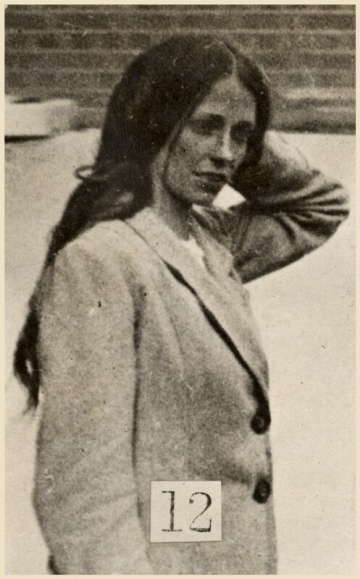Lilian Lenton

- Born: 1891
- Died: 1972
- Occupation: social campaigner
- Claims to fame: one of the most famous women pursued by the police as a suffragette, with wanted posters of her
Her background
Lilian grew up in Leicester and trained as a professional dancer. She was inspired to join the WSPU after hearing Emmeline Pankhurst speak, and became a committed suffragette.
As a suffragette
Lilian took an active role in the 1912 window-breaking campaign. She was arrested under the alias ‘Ida Inkley’ and sentenced to two months in prison. In 1913, she was suspected of burning down the tea pavilion at Kew Gardens, Surrey, with fellow suffragette Olive Wharry and was imprisoned. She went on hunger strike. Lilian was released after two days, seriously ill. The Home Secretary denied that she had been force-fed before government papers showed that she had been.
Once Lilian had recovered, she went on the run to avoid being sent back to prison under the government’s ‘Cat and Mouse’ Act, remaining on the run for some weeks until she was arrested for setting an empty house on fire in Doncaster. She was released from prison in Leeds after hunger striking, escaping to France in the disguise of a boy. A 'wanted' photograph was issued. She returned to England and was recaptured at Paddington station, London, reclaiming a bicycle from the lost baggage department. Her imprisonment and release cycle continued, with many people helping and supporting her. The WPSU stopped activities during the First World War, where Lilian served with the Scottish Women’s Hospitals Unit in Serbia and was awarded a French Red Cross medal. The Representation of the People Act did not allow her to vote, so she continued to campaign for women’s rights after 1918.
Questions
- Why did she smash windows and commit arson as a suffragette?
- Why was force- feeding dangerous?
- Why was she unhappy with the Representation of the People Act?
Glossary
- Force-feeding – a brutal and dangerous practice where food was forced through a tube down the throat or nose into the stomach
- ‘Cat and Mouse’ Act (1913) – allowed suffragettes to be temporarily released from prison to remove the need to forcibly feed them
Useful resources
- Elizabeth Crawford, The Women’s Suffrage Movement: a reference guide, 1866–1928 (Routledge, 1999)
- ‘Miss Lilian Lenton: Again in Court’, Yorkshire Post 9 October 1913
- HA Suffrage Case Study - Lilian Lenton
176.7 KB PDF document - HA Suffrage Case Study - Lilian Lenton (Word)
345.9 KB Word document
